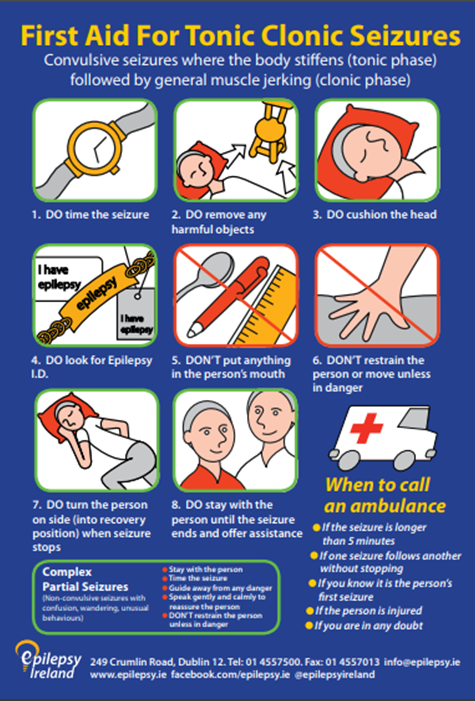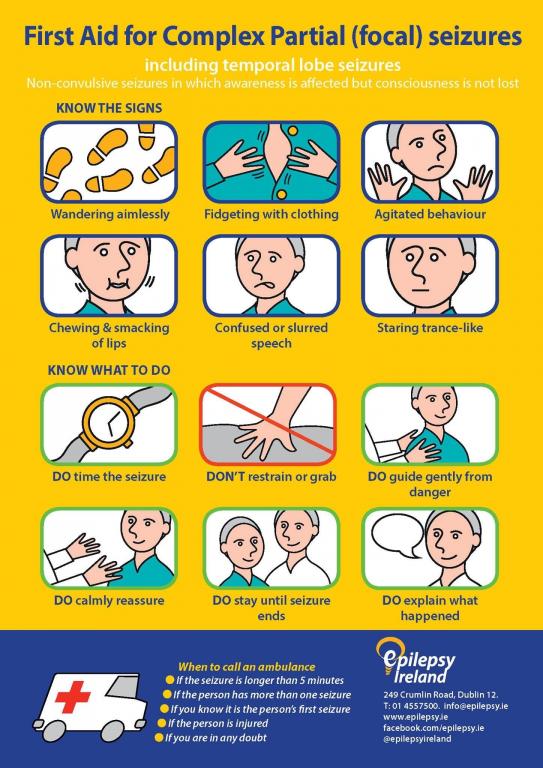Purple Day is an international, grassroots effort dedicated to increasing awareness about epilepsy worldwide.
On March 26th annually, people in countries around the world are invited to wear purple and host events in support of epilepsy awareness
The Facts:
- 50 million people worldwide have epilepsy, which equates to 1 in 100 people
- In 50% of cases, the cause is unknown
- Epilepsy is not contagious
- Epilepsy is not a disease
- Epilepsy is not a psychological disorder
What is Epilepsy?
Epilepsy is a neurological (brain) condition characterised by a tendency to have repeated seizures.
An easy way to think of a seizure for those of us who don’t have medical degrees is to think of it like a power cut in your home.
Envisage sitting at home – the lights flicker, the power goes and, in most cases, the power will come back on within a few minutes. When it does come back on, things won’t be as they were before as it takes time for things to get back to normal.
Your oven clock needs to be reset and your alarm might be beeping but eventually, with time and care, everything will return to normal.
This is what is happening in a person’s brain before, during and after a seizure.
Seizures
Types
There is more than one type of seizure that a person with epilepsy can experience. In fact, there is anything up to 50+ types of seizures that can be experienced by people with epilepsy.
Most people are familiar with the type of seizure where the person:
- falls to the ground suddenly
- their muscles stiffen and jerk involuntarily
This is a common type of seizure known as a tonic-clonic seizure. But bear in mind that seizures can present in other ways as well, depending on where in the brain they originate.
For example, a person could be fully upright during a seizure but could be:
- in a trance-like state
- fidgeting with their clothes
- slurring speech
- smacking their lips
- displaying other forms of confused behaviour
This is another extremely common type of seizure, known as a focal (or complex-partial) seizure.
It is impossible to list the way every single seizure presents but it is crucial to remember that there is more than one type of seizure.
So, if you see someone wandering aimlessly or displaying characteristics like the ones mentioned above which appear somewhat odd, bear in mind that they could be a person with epilepsy and that they might need your help.
What triggers a seizure?
Not everyone can identify specific events or circumstances that affect seizures, but some are able to recognize definite seizure triggers. Some common triggers include:
- Forgetting to take prescribed seizure medication
- Lack of sleep
- Missing meals
- Stress, excitement, emotional upset
- Menstrual cycle / hormonal changes
- Illness or fever
- Low seizure medication levels
- Medications other than prescribed seizure medication
- Flickering lights of computers, television, videos, etc., and sometimes even bright sunlight
- Street drugs
How do I help?
Let’s start off with the facts for seizure first-aid and we’ll start out with the version of a seizure you’re probably all familiar with; where a person falls over suddenly and they begin to convulse (a tonic-clonic seizure).
How to help a tonic-clonic seizure:
- Stay calm. This can be easier said than done, especially if you have never seen a seizure before. But remember, you can’t help anyone if you’re panicking – take a breath, assess the situation and get to work
- Time the seizure
- Remove any harmful objects that may be surrounding the person having the seizure e.g. a chair that they could repeatedly hit themselves off while convulsing involuntarily
- Cushion the person’s head. If you are wearing a jumper or jacket, try to place it underneath the head to stop the person from hurting themselves.
- Look for an epilepsy I.D. Many people who have epilepsy wear a bracelet or have a card in their wallet to say they have epilepsy
- Don’t put anything in the person’s mouth
- Don’t restrain or move the person unless they are in danger
- When the seizure stops, roll the person onto their side into the recovery position
- Always stay with the person until the seizure ends and offer help. When the person begins to recover, stay with them. They will probably feel like they’ve just completed a triathlon – exhausted and a bit disorientated (like after a power cut when things are taking time to get back to normal)

How to help a complex (partial) focal seizure:
As aforementioned, this type of seizure could include the person being in a trance, smacking their lips, appearing confused & agitated, wandering aimlessly or even fidgeting with clothing.
- Time the seizure
- Do not restrain or grab the person
- Gently guide the person away from any danger – for example they may be wandering into a busy road
- Talk gently and calmly and do not agitate the person
- When the seizure stops, stay with the person, reassure them and let them know what happened. They will essentially have lost time during the seizure so they will probably be somewhat confused coming out of it

When to call an ambulance
- If a seizure goes over 5 minutes, it could be very dangerous to the person with epilepsy. Dial 999 and ask for an ambulance to come and assist.
- If you know it’s the person’s first seizure. If you and your friend of 20 years are walking down the road and they suddenly have a seizure, they need medical care so dial 999 and get the experts on the scene.
- If the person having the seizure briefly comes out of it and goes into another seizure. This is potentially very dangerous for the person with epilepsy so they need expert care
- If the person is injured; if you see a person get physically injured as a result of having a seizure, it’s important to dial 999. They might not need a neurologist but they certainly might need A&E
- If you’re in any doubt at all, call an ambulance. Nobody is going to be annoyed at you for calling an ambulance out of real concern; not the person who’s having the seizure and not the ambulance crew. If you’re concerned in any way, we encourage you to dial 999
Myths vs Facts
FACT: NEVER PUT ANYTHING IN A PERSON’S MOUTH DURING A SEIZURE
Spoons, rulers, pieces of wood, phones - these items (amongst others) are all items that have been placed in people's mouth during a seizure.
This can cause untold dental damage to a person having a seizure and it is one of the biggest problems for people with epilepsy when it comes to seizure first-aid.
Putting a spoon in someone’s mouth during a seizure is a MYTH.
MYTH: EVERYONE WITH EPILEPSY IS PHOTOSENSITIVE
Photosensitive epilepsy is of course a disabling type of epilepsy that people are living with every day.
However, it only affects a very small percentage of the wider epilepsy population. In fact, only about 3% of the 40,000 people with epilepsy living with the condition in Ireland are photosensitive.
MYTH: A PERSON HAVING A SEIZURE MUST BE RESTRAINED
No.
The person having a seizure has no control over their muscles or body so in holding them down or back, you’ll hurt them or potentially hurt yourself. Let the seizure run its course and follow the steps outlined above.
MYTH: THERE IS ONLY ONE TYPE OF SEIZURE
Well we’ve been through this already - all seizures do not look the same.
In fact there are over 50+ types of seizures. This has been a real issue for people with epilepsy in that their seizures have been misinterpreted by others as being drunk or on drugs.
What we ask you to do is take that extra second and consider whether the person could potentially be having a seizure.
Is there a cure?
There is currently no “cure” for epilepsy.
However, for 10-15% of people with epilepsy, the surgical removal of the seizure focus – the part of brain where the person’s seizures start – can eliminate all seizure activity.
For more than half of people with epilepsy, medication will control their seizures.
Additionally, some children will outgrow their epilepsy and some adults may have a spontaneous remission.
Information from Epilepsy Ireland and purpleday.org

